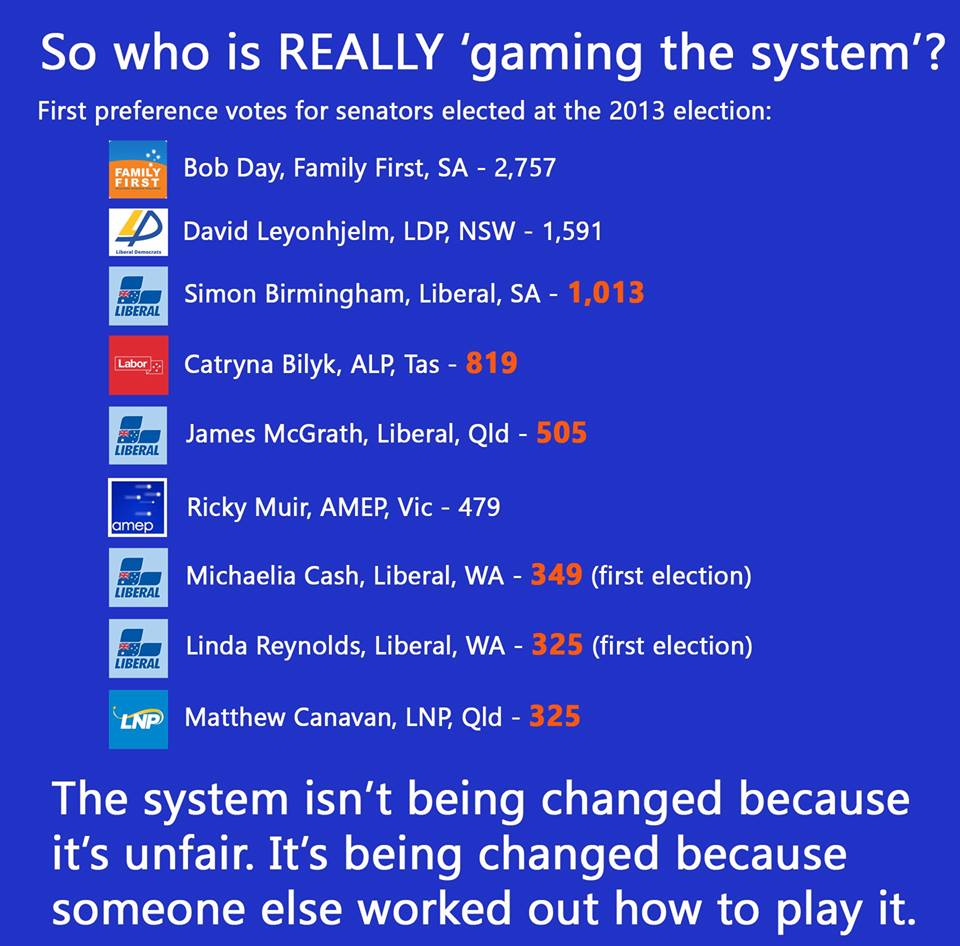There’s been a lot of attention over the last few days on the newly elected One Nation senator from Queensland, Malcolm Roberts. His election was a bit of a surprise, whereas we were confident that Pauline Hanson would win her seat, and her two other Senate colleagues were predicted as likely to win since election night.
There’s a lot to pick over about Roberts’ record, but a lot of the focus has been on the fact that he received only 77 primary votes – less than any other successful candidate.
I actually think there is a real problem with our Senate voting system which is exposed by Roberts’ tiny primary vote, but it’s not the one that most media has focused on. This problem isn’t unique to Malcolm Roberts. The reality is most senators, from major and minor parties, receive very few personal votes, and rely almost entirely on voters preferencing according to their party’s ticket to win a seat.
It is remarkable that someone won a seat off only 77 personal primary votes, but I would argue that it isn’t significantly different to the many major party candidates elected on a few thousand votes in large states.
The phenomenon of unpopular candidates winning seats with no public profile is not limited to One Nation – the major parties have a history of gifting Senate seats to party hacks who couldn’t win a seat in the House of Representatives. It doesn’t have to be this way.
In this article, I’ll explain the broader issue, and what I think can solve it.



